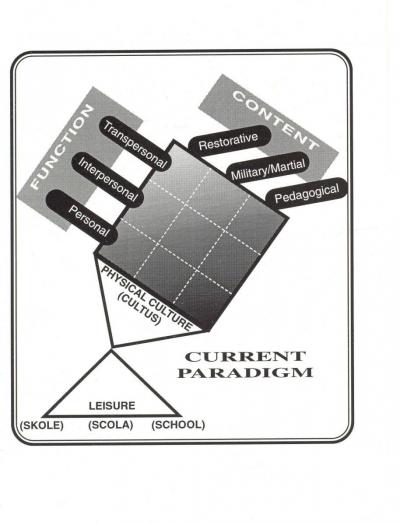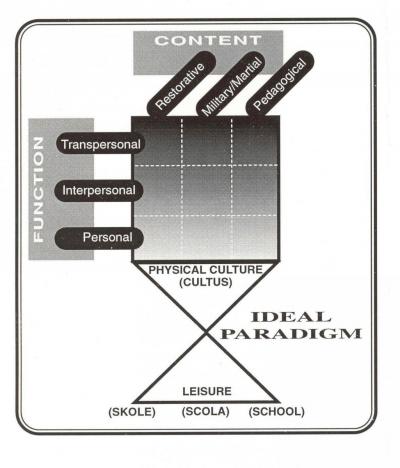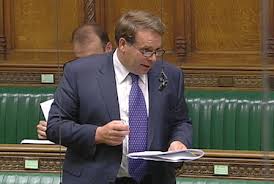Main Menu
Latest Blog Entry
User login
Why PE should be more WE than ME
“Children need to express themselves as individuals”
So goes modern thought as we create a generation of self-centred, narcisstic kids who are unable to cope with failure when it happens.
In the U,K. there is a perceived crisis in our society and politicians are calling it “Strivers versus Skivers“. (I wrote about discipline versus liberty last week). But do politicians know that their misunderstanding of Physical Education could be part of the problem?
Once again the politicians and their cronies come up with PE curricula that are based on either a competitive sporting basis or a “let’s just get them moving” mantra. (This comes from the same brainiacs who think Sudoku is a tool to help understanding of Maths, instead of it being a logic puzzle.)
Someone had the bright idea that people move when dancing, so dancing is like PE, lets get PE teachers doing dance. Dance is a form of artistic expression and is best left to those who are good at it according to the dancers themselves (see more here).
As to girls, lots of schools have thrown their hands up in the air and think that sticking them on Wii. or a Cross trainer watching t.v. is the way forward. Compare that to what used to happen 50 or 100 years ago).
P.E. classes in the teenage years have become less about doing, and more about “theory of doing”. Children can recite 5 elements of fitness, but can’t touch their toes, let alone do a handstand. Then we send them out to play 15 a side rugby.
Dance, theory and games form the Pedagogical part of Physical Culture: where is the Martial and Restorative components?
Restoring the balance
If you look at the following two diagrams you can see how as a society we have become off balance.
Dr Ed Thomas of the Iowa Health and Physical Readiness Alliance explains it in more detail in Chapter 6 of his book Rama
Physical education can be divided into three basic content areas:
1. Restorative–Techniques, obvious or subtle, that bring the body toward its optimal state of harmony and compensate for the stress of daily life.
2. Martial–Techniques, obvious or subtle, that teach appropriate offensive and defensive responses to external aggression.
3. Pedagogical–Sports, games, theoretical bodies of knowledge, and dance.
The function of physical education can also be divided into three areas:
1. Personal--The focus of this aspect is on individual health, comfort, and physical gratification. Here the self is felt to exist at the borders of the skin and the limits of personal desire. It can easily be reduced to self-indulgence but can also serve to stimulate healthy life habits.
2. Interpersonal–At this level, one’s attention turns to the needs of others. At lower levels it may be confined to family, neighbourhood, gender, race, and so forth. Higher development brings awareness that it is the duty of all able citizens to be physically and mentally prepared to defend the highest ideals of their nation and to contribute productively to its future.
Further growth will lead to the realization that national borders are superficial boundaries within an interdependent family of living organisms who share the earth.
3. Transpersonal–Cultures vary greatly in the development and understanding of obvious and subtle physical techniques that contribute to the spiritual quest. Transcendence brings the uninterrupted, moment-to-moment realisation that all things are divinely One.

Wow! There is a bit more to P.E. than supervising a game of rounders where half the class are sat down waiting to bat.
Local M.P. Neil Parish equally clueless
 I asked my local M.P. to explain the following:
I asked my local M.P. to explain the following:
“My daughter goes to a state Primary school. Her physical education lessons are often moved aside or shortened due to “timetable pressures”.
He responded:
“I am pleased that the Government has shown its commitment to retaining and encouraging sport in schools. The London Olympics has provided the opportunity to make a lasting legacy for sport in this country and a big part of that means encouraging more young people taking part in competitive sports.
The Government has been clear that it wants Physical Education, swimming and competitive sport to be a compulsory part of the curriculum at each of the four key stages. Following the review of the National Curriculum, the new Programme of Study, when it comes out, will be shorter, simpler and far less prescriptive to allow for the maximum level of innovation in schools.
The Education Secretary, Michael Gove MP, has also confirmed that £65 million of new funding will be made available for schools to enable them to provide more opportunities for competitive sport. This funding will cover the 2012/13 school year.
It is also very important that young people have access to playing fields, so I welcome the planning framework which has introduced stronger protection for playing fields.
Playing fields cannot be built on unless they are replaced, or Sport England agrees they are surplus to requirements.
The framework also includes a new designation that lets local people earmark locally important green spaces for protection, including playing fields.”
As you can see, not only does he not answer my concerns, the emphasis is on competitive sport. You can see many notices like the one in this picture placed in his constituency.
I also like the point about “maximum level of innovation” in schools: as if teachers didn’t have enough to worry about.
There is nothing about quality of physical education in itself.
Become part of the solution
Instead of pointing the finger at “skivers” or insisting on “more competitive sport” the politicians (how many went to Independent schools with a huge emphasis on games?), teachers and parents can work together on restoring the balance.
Physical culture and health is directly linked to the state of the nation. A flabby body will lead to a flabby mind.
- Our duty as parents and teachers is to set an example and provide opportunities for our children to develop. That is different from “letting little Johnny be himself”.
- Provide restorative exercise programmes on a daily basis. Mindfulness training, relaxation, stretching are all useful. Switch off screens.
- Get P.E. teachers educated on more than “refereeing”. That includes physical tasks such as rope climbing, gymnastics, jump ropes.
- Look to include some martial arts and self defence class at some point: that is not pyramid selling belt collecting, but learning how to move your own body and react to and restrain others. Wrestling, judo, tai chi could all be done at a young age.
We can make a difference together.
(Apologies for the bad rhyme in the headline, paraphrasing Muhammed Ali.)
Client Testimonials
 Millfield School
Millfield School
For the past 2 years, as Head of Athletic Development, James has made a significant contribution to the development and understanding of athletic development among our sports programmes. With knowledge and passion, he has continually championed best practise in relation to the athletic development of young athletes, and been unstinting in the rigour of its delivery. As a coach, James has made a direct contribution to the development of several prominent individuals, as well as more broadly to our squads.
More


Comments
[…] Coming in the week of the leaked Ofsted report on P.E. in schools, this is the type of education that is needed in schools. Competitive sport is different from Physical Education (as I have discussed here). […]
[…] got this simple premise from Ed Thomas, as well as “precision, variety and […]
[…] three most important words in any successful relationship are “We, not me.” (Paraphrasing Muhammed Ali’s famous “Me, We” […]